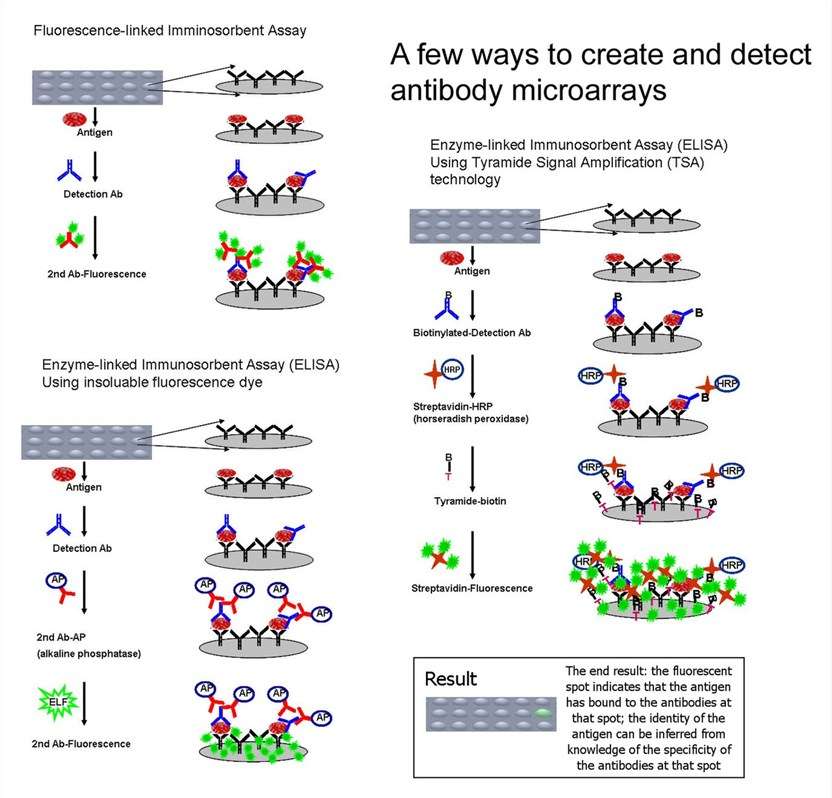Antibody-based therapeutics are of great value for the treatment of human diseases. In addition to functional activity, affinity, or physico-chemical properties, antibody specificity is considered to be one of the most crucial attributes for safety and efficacy. Creative Biolabs provides antibody specificity profile assay to determine the antibody reactivity against human leukocyte antigen (HLA).
Antibody microarray, also known as antibody array, is a specific form of protein microarray. In this technology, a collection of captured antibodies is spotted and fixed on a solid surface including glass, plastic, membrane, or silicon chip, and the interaction between the antibody and its target antigen is detected. Antibody microarray is often used for detecting protein expression from various biofluids including serum, plasma, and cell or tissue lysates.
 Fig.1 Schematic of antibody microarray.Distributed under CC BY-SA 4.0, from Wiki, without modification.
Fig.1 Schematic of antibody microarray.Distributed under CC BY-SA 4.0, from Wiki, without modification.
Antibody specificity profiling is used to examine antibody reactivity against lots of human protein targets under either native or denaturing conditions. Since these putative targets are relatively homogeneous with regard to concentration and represent the vast majority of the human proteome, antibody specificity profiling represents the most unbiased and informative means to evaluate antibody sensitivity and specificity. Antibody specificity profiling is often used for verifying reagents critical to basic science or prioritizing therapeutic large molecules.
Tips: When multiple antibodies are profiled simultaneously, only one positive and negative control will be performed.
Timeline: 4 to 6 weeks
Delivery:
As a leader in HLA antibody detection service, Creative Biolabs offers a full range portfolio of assays for low- to high-resolution detection. We also offer the most cost-effective multiplex assays and a wide range of singleplex kits. For more information, please feel free to contact us directly.
For any technical issues or product/service related questions, please leave your information below. Our team will contact you soon.
All products and services are For Research Use Only and CANNOT be used in the treatment or diagnosis of disease.
 NEWSLETTER
NEWSLETTER
The latest newsletter to introduce the latest breaking information, our site updates, field and other scientific news, important events, and insights from industry leaders
LEARN MORE NEWSLETTER NEW SOLUTION
NEW SOLUTION
CellRapeutics™ In Vivo Cell Engineering: One-stop in vivo T/B/NK cell and macrophage engineering services covering vectors construction to function verification.
LEARN MORE SOLUTION NOVEL TECHNOLOGY
NOVEL TECHNOLOGY
Silence™ CAR-T Cell: A novel platform to enhance CAR-T cell immunotherapy by combining RNAi technology to suppress genes that may impede CAR functionality.
LEARN MORE NOVEL TECHNOLOGY NEW SOLUTION
NEW SOLUTION
Canine CAR-T Therapy Development: From early target discovery, CAR design and construction, cell culture, and transfection, to in vitro and in vivo function validation.
LEARN MORE SOLUTION

